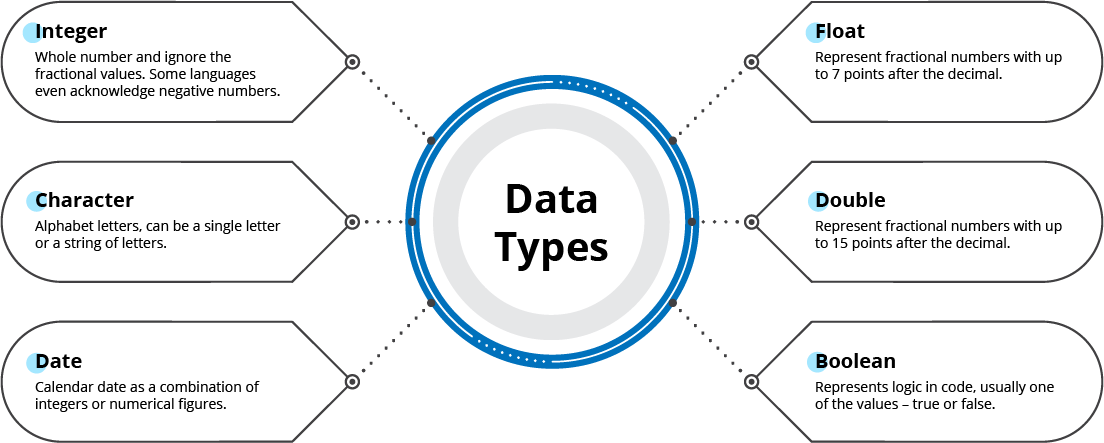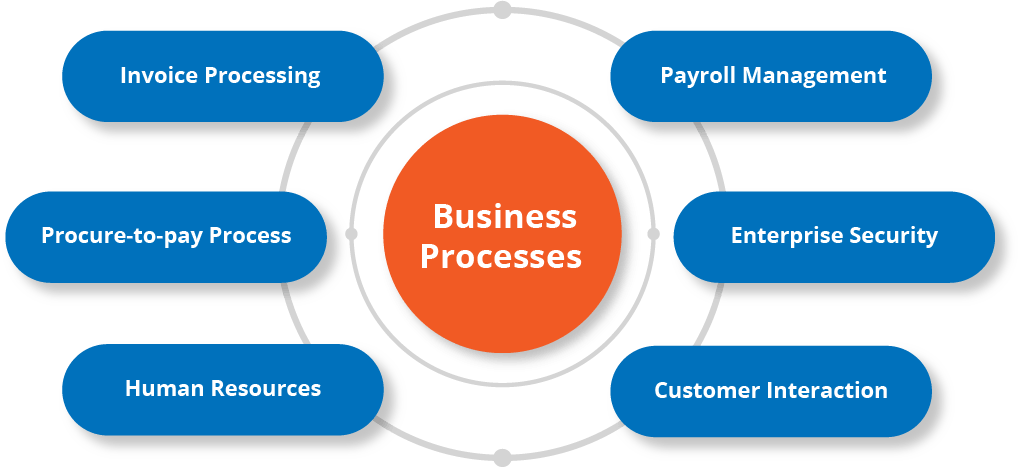It is a joyous day when an organization decides to adopt RPA. Say goodbye to repetitive, time-consuming processes, and hello to enhanced productivity and efficiency.
But there’s a catch! If an RPA bot is not implemented properly, it can take an ugly turn. Find below why having a checklist at your disposal is crucial.
Why Implementing RPA without a Checklist can be a Disaster?
Before we delve into the checklist, let’s look at 3 major pitfalls businesses may encounter – in case they implement RPA without a checklist.
-
Sunken Cost as Good as a Sunken Ship
A sunken ship once did make history a century back when it hit an iceberg owing to a lack of foresight. Let’s learn from it and not repeat it. Lack of foresight while implementing RPA is detrimental to the organization. In the Delloite Global RPA survey, 37% of respondents mentioned that their cost expectations of implementation were not met. Without a proper checklist, the time, resources, and effort spent on implementing RPA would all be for nothing.
In short – use an RPA checklist. -
Picking the wrong cherry
Is there such a thing as ‘automating the wrong process’? Not all processes perform better when automated. Picking the wrong process for automation would only result in increased workload for the organization instead of reducing the workload. In a study conducted by Ernest and Young in 2021, it was found that 30-50% of robotic automation processes fail. It so happens that the wrong process was chosen to automate leading to this detrimental loss of time, resources, and revenue.
Referring to a checklist is the way to go while implementing RPA. -
Missing Out on Scalability
Scalability is one of the non-negotiables concerning RPA bots. Automating processes with RPA bots that are not built for scalability would be detrimental to upgrading their workflows. Following an RPA checklist would ensure that businesses are well aware of the need to build bots for scalability.
Saving Time, Resources, and Revenue with a Foolproof RPA Implementation Checklist
The above pitfalls are more than enough to encourage the use of an RPA implementation checklist. Without further ado, let’s have a look at the checklist and you can craft your RPA implementation journey accordingly.
As mentioned previously, all processes are not automation friendly. This brings us to a juncture where it is necessary to have a document outlining details such as:
-
What are the processes within the business workflow that can potentially be automated by RPA bots?
RPA rests on some core principles, and recognizing them will make it easier to pick out processes that can be automated. Business processes that fulfill all or a combination of the principles outlined below are a green signal for RPA.
- Entering data of any format into an application or a system.
- Receiving, recognizing, reading, and validating data from multiple sources.
- Carrying out a series of tasks depending on the priorities fed into the algorithm.
- Analyze complex data based on business rules applied.
- Monitoring operations to craft reports on necessary KPIs.
- Customer/employee interaction and low-level grievance addressal.
-
Are these processes automation-friendly?
To be automation friendly they must fulfil the conditions below:
- Repetitive
- High Volume
- Rule-based
- Well-documented process
- High ROI Potential
-
What are the security measures that need to be considered while automating these processes?
Enterprises all have their own security measures. It is best to identify and outline them prior to customizing RPA bots. Doing so otherwise can open up security loopholes later in the implementation journey.
RPA bots can work with any data type that it has been engineered to. Here are the most common data types:

Once an organization has the answers to the above questions, it is time to jump to the next crucial bit – data handling. The types of data corresponding to each process that is chosen to be automated, must be listed.
- This is to ensure that when RPA bots are in their customizing phases, they can be tested with the aid of this list.
- The list of data types will also help in validating the authenticity of the data processed by the bots.

Businesses to be Automated
- Invoice Processing – Receive, send, and process invoices by automating the data, reconciling errors, and working out rule-based decisions.
- Procure-to-pay Process - Automate vendor master management, sourcing and contracting, purchase order process, receiving goods, to payments.
- Human Resources – Faster and improved hiring process, employee onboarding, manage attendance, leave authorization, and timesheets with an RPA.
- Payroll Management - Bots can verify employee data across systems, validate time records, load earnings, deductions, administer benefits, and reimbursements.
- Enterprise Security – Automate regular security checks, round-the-clock network monitoring, security patches and updates, access management, etc.
- Customer Interaction – Interact with customers with their queries and navigate them to a solution based on the inputs engineered.
These are the common processes organizations across industries can automate without a second thought. However, it is often inadvisable to implement RPA bots into every business operation that runs the organization. In 2021, the McKinsey Global Institute estimated that 30% of all office processes can be automated.
This goes on to show that although RPA implementation is definitely helpful in reducing the burden of carrying out repetitive rule-based tasks – it is not the answer to all process challenges plaguing an organization.
[Case study]: Reimagine Education Administrative Operations With RPAWhen RPA bots are fashioned, the business rules of the corresponding processes must be taken into consideration. There must be no room for ambiguity when it comes to business rules, and they must be standardized.
Find out how much implementing an RPA would cost you.
[Case Study]: RPA Reduced Appointment Scheduling time by 85%Implementing the RPA is one part of the story. The next is evolving it according to trends, and customer requirements, fine-tuning the process to make it more efficient – all this needs a team. And the team needs a framework.
There needs to be a process controller framework in place to manage the RPA implementation activities. The framework would be better off if it included possible hiccups the implementation journey may face.
- Who will be involved in the implementation project?
- Who is supervising the project?
- What are the KPIs gauge the efficiency of the project?
- How often is the report of the KPIs generated?
- What is the test strategy and coverage?
- What are the targeted timeline goals to assess the progress of the project?
- What are the contingency plans when the team fails to achieve the RPA implementation target?
Implementing RPA without an expected ROI is like putting together a puzzle without a reference picture. The whole point of implementing an RPA bot is to improve efficiency by reducing the resources spent on the process, thereby reducing costs.
Businesses must come up with an expected ROI projection to help them allocate their resources accordingly while implementing and managing the RPA bots.

Monthly Task Cost without automation will evolve every month as it will include the task growth percentage. Every month’s task cost will be the cumulative cost of the previous month’s task cost multiplied by the growth rate percentage.
In that case, the formula for Monthly Task Cost without Automation = Sum of all previous monthly task costs without automation*(1+Growth Rate Percentage)
[Related Link]: Calculate your RPA Implementation CostLast but not least, the plan to implement RPA must be communicated to all teams within the organization, well in advance. Especially the ones who will be utilizing RPA bots and working alongside them. Lack of communication may deter employees and cause them to resist the change.
Employees may also be worried about being replaced by RPA bots. It is imperative to let them know how RPA bots would still need assistance, maintenance, and advancement for which human skills are necessary. It must be communicated that implementing RPA opens up opportunities for improvement and growth in the employee’s portfolio.
[Related Links]: RPA to Transform Project ManagementSwim in Benefits
We all remember the famous image of Mr.Scrooge McDuck swimming in his bathtub of green dollar bills – that's what awaits businesses who embark on the RPA implementation journey. Implementing RPA brings in improved productivity and efficiency at a fraction of the cost – thereby helping businesses to innovate and scale rapidly.
Hassle-free RPA Implementation
Implementing RPA is a piece of cake once the checklist is followed. What’s better is outsourcing RPA implementation to an expert.
Here at Nalashaa, we have RPA experts who have implemented and supported RPA bots in various industries. All you have to do is write to us at info@nalashaa.com and sit back as we help you achieve your business goals.

